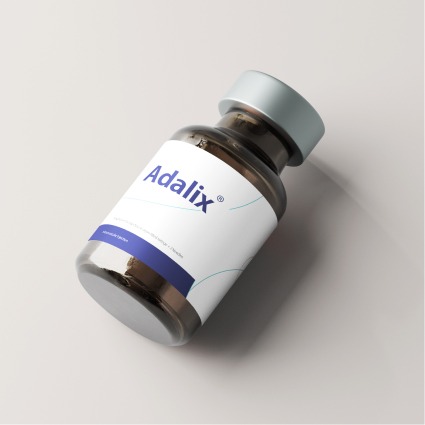Saudi Vision 2030 & Oman Vision 2040 in Biotech (Biopharma Focus)
What sets Saudi Arabia’s biotech vision under Vision 2030 apart from Oman’s?
Saudi Arabia aims to become a regional and global biotech hub, anchored by a National Biotechnology Strategy (NBS) that localizes vaccine production and biopharmaceuticals, advances genomics/gene therapy, and strengthens agri-biotechnology.
Core pillars referenced publicly
- Vaccine localization and bio-manufacturing
- Biopharmaceutical manufacturing scale-up
- Genomics and gene-therapy research capacity
- Bio-innovation in agriculture/plant optimization
These pillars sit within Vision 2030’s industrial and logistics ambitions (NIDLP), aligning regulation, manufacturing, and supply chains to speed health innovation and reduce import dependency. (Saudi Vision 2030)
What is Oman’s biotech ambition within Vision 2040?
Oman Vision 2040 aims for economic diversification and a knowledge-based economy, with manufacturing strategies and sector policies that explicitly encourage pharmaceutical and biopharmaceutical capacity, accreditation (GMP/ISO), and export competitiveness. (Oman 2040)
Strategic emphases highlighted
- Develop knowledge-driven health manufacturing clusters
- Raise domestic pharma output and accreditation levels
- Build export-oriented pharma capacity under Vision 2040
These priorities are reiterated across Vision 2040 materials and sector updates, emphasizing self-reliance and quality-driven growth of the health-industrial base. (andp.unescwa.org)
How do the two visions differ in scope and instruments?
Saudi Arabia’s plan is a national-strategy-led and scale-intensive plan, with explicit biotech pillars and an ecosystem push. Oman’s plan, on the other hand, is diversification-led, embedding pharma/biotech within a broader manufacturing and innovation agenda.
Practical contrasts
- Saudi: central NBS with four pillars; strong NIDLP link
- Oman: Vision 2040 + Manufacturing Strategy 2040; pharma export and accreditation focus
- Saudi: rapid hub-building, global partner outreach
Both approaches converge on localization, workforce, and standards, but Saudi Arabia foregrounds biotech as a flagship sector; Oman integrates it as a key driver within manufacturing and health security. (Saudi Vision 2030)
What are the biopharma priorities explicitly called out in the Saudi Vision 2030 execution?
Saudi highlights local vaccine and biologics manufacturing, biopharma scale-up, and talent pipelines—with public statements tying the strategy to industrial policy and job creation. (Saudi Vision 2030)
Indicative elements
- Localize vaccines/therapeutic biologics production
- Expand GMP capacity and regulatory agility (SFDA)
- Build workforce via education and accelerators
These actions are complemented by SFDA’s role in NIDLP and initiatives (e.g., biotech accelerator) to attract partners and de-risk early-stage ventures under Vision 2030. (Saudi Food and Drug Authority)
What are Oman’s practical levers for biopharma under Vision 2040?
Oman focuses on industrial capability, accreditation, and exports, utilizing policy to attract pharmaceutical investment and expand its domestic share of production, aligning with Vision 2040’s goals for human capital and innovation. (Zawya)
Policy levers referenced
- Support for GMP/ISO accreditation
- Incentives for local manufacturing and cluster formation
- Export positioning within regional markets
These levers are featured in Vision 2040 booklets, manufacturing strategy documents, and sector announcements that target the pharmaceutical industry as a cornerstone of self-reliance. (Oman 2040)
Where do Saudi Arabia’s 2030 Vision and Oman’s 2040 Vision overlap in biopharma?
Both pursue localization of critical health manufacturing, workforce/skills development, regulatory capability, and export-ready quality systems—the shared backbone of a resilient biopharma base. (Saudi Vision 2030)
Overlap themes
- Localization of vaccines/biologics and supply-chain resilience
- GMP/ISO quality and regulatory modernization
- Talent pipelines and clinical-research capacity
- Industrial diversification with regional export goals
This overlap sets the stage for complementary growth: Saudi’s scale and ecosystem orchestration can pair with Oman’s manufacturing and export ambitions for a Gulf-wide value chain. (Saudi Vision 2030)
How do these visions address the regulations and standards required for the biopharmaceutical industry?
Saudi Arabia’s SFDA couples with NIDLP/NBS to accelerate pathways and inspection readiness, while Oman’s strategies emphasize international accreditation (GMP/ISO) as gateways to export markets. (Saudi Food and Drug Authority)
Regulatory vectors
- Saudi: adaptive regulation linked to industrial strategy
- Oman: standards compliance as industrial competitiveness
Regulatory maturity is central to investor confidence and global partnering; both countries signal alignment with international norms to enable scale and cross-border commerce. (Saudi Food and Drug Authority)
What is the workforce and education angle in each plan?
Saudi Arabia’s NBS emphasizes talent pipelines and international partnerships, while Oman’s 2040 stresses the importance of skills for knowledge manufacturing and R&D-ready human capital. (Oxford Business Group)
Talent levers
- Saudi: accelerators, partnerships, education reforms
- Oman: manufacturing competencies, cluster skills, export-grade QA/QC
Over time, shared training academies and joint trial networks could reduce the scarcity of bioprocess, QA/QC, PV, and regulatory talent across the peninsula. (Oxford Business Group)
What economic development outcomes are targeted?
Saudi Arabia positions biotech as a growth engine, contributing to job creation and non-oil GDP; Oman targets pharmaceutical export growth and a larger domestic share of essential medicines. (Arab News)
Economic signals
- Saudi: job creation and biomanufacturing hub ambitions
- Oman: self-sufficiency → exports under Vision 2040
Diversification logic is shared: both treat biopharma as an anchor for knowledge economies that can weather commodity cycles and build high-skill employment bases. (andp.unescwa.org)
How are the two visions engaging global partners?
Saudi Arabia has issued an explicit global invitation to co-build its biotech ecosystem under the NBS; Oman highlights investment attraction and accreditation to integrate into global supply chains. (BioXconomy)
Collaboration forms
- Co-development and tech transfer in biologics/vaccines
- Contract development and manufacturing (CDMO) models
- Joint clinical research and regional distribution/logistics
Strategic partnering shortens time to capability and opens export corridors—particularly in biosimilars, vaccines, and complex injectables. (BioXconomy)
Explore the full range of services and research at Opal Bio Pharma.
Are there documented constraints or open questions?
Yes: cost curves, talent depth, quality assurance at scale, and sustainability are the main execution risks for both agendas. (PMC)
Risk areas to monitor
- Budget impact and pricing for advanced therapies
- Inspection capacity and batch-release reliability
- Data governance for genomics and pharmacovigilance
- Energy/water intensity of bio-facilities in hot climates
Addressing these risks will determine whether ambitions translate into sustainable, export-grade operations that pass international audits and win long-run trust. (PMC)
What joint opportunities could Saudi Arabia and Oman pursue to maximize overlap and foster a hopeful future? The creation of a GCC biopharma corridor, leveraging Saudi Arabia’s ecosystem scale and Oman’s manufacturing/export posture, could reduce duplication and accelerate readiness.
A GCC biopharma corridor linking Saudi Arabia’s ecosystem scale with Oman’s manufacturing/export posture could reduce duplication and accelerate readiness.
High-impact joint plays
- Shared GMP academies and inspector training
- Regional trial networks and pharmacovigilance registries
- Coordinated cold-chain/logistics standards under NIDLP routes
- Mutual recognition of specific quality/ethics review processes
This would convert geographic proximity into learning speed and investor appeal, enabling specialization (e.g., one site in cell-processing excellence; another in fill-finish or QC analytics). (Saudi Vision 2030)
Bottom line: How do Vision 2030 and Vision 2040 align for the biopharma industry?
They converge on localization, quality, talent, and exports, with complementary strengths—Saudi Arabia’s hub-building NBS and Oman’s manufacturing/export orientation—that together can form a resilient regional biopharma value chain.
In summary
- Saudi: biotech as a national flagship (NBS, NIDLP)
- Oman: pharma/biotech as a manufacturing and export pillar
- Overlap: standards, skills, localization, and regional collaboration
The path to durable impact runs through execution: accredited facilities, skilled workforces, adaptive regulation, and credible partnerships that turn policy into audited product on global shelves. (Saudi Vision 2030)

